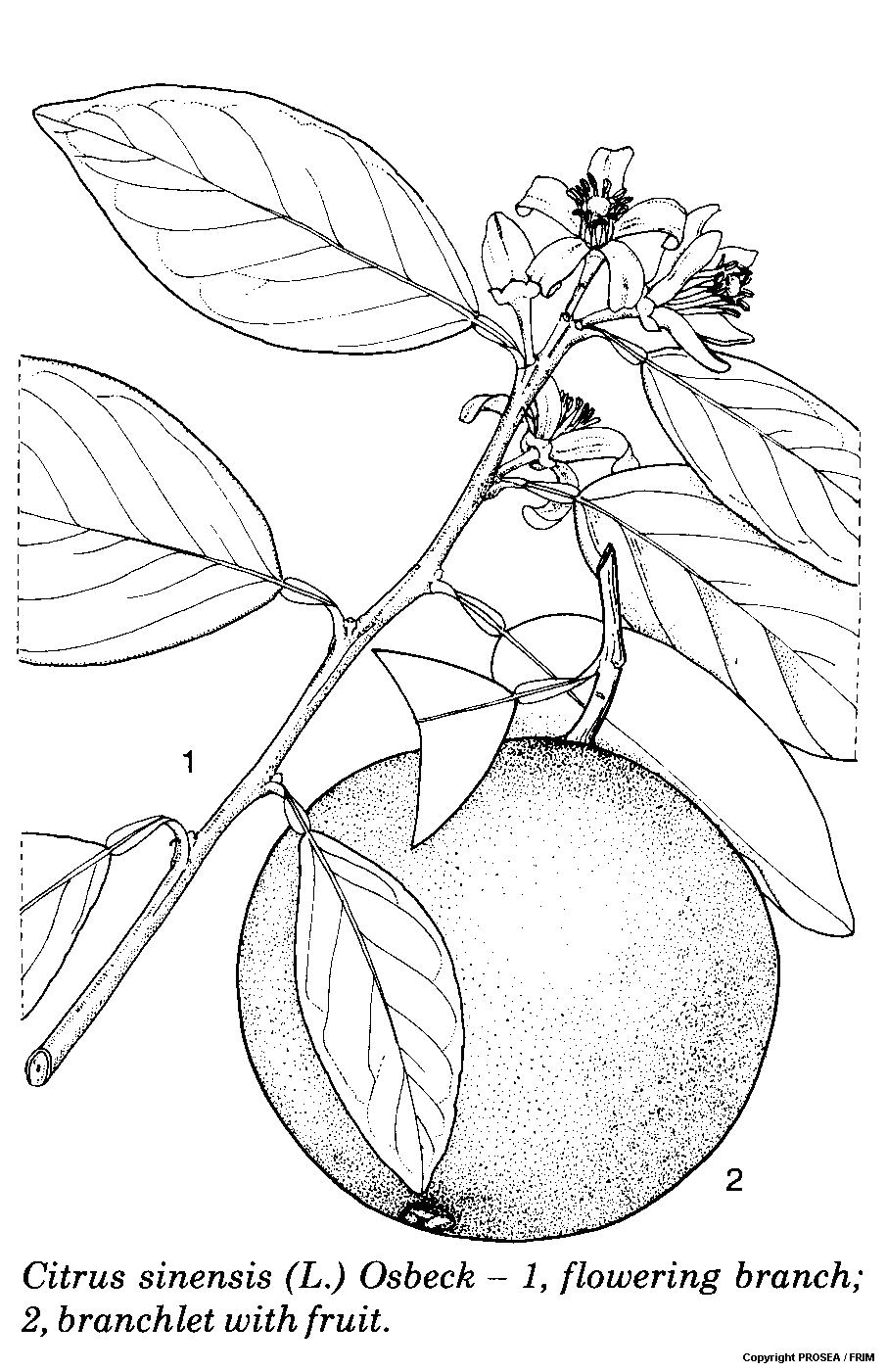Citrus sinensis (L.) Osbeck
Family
Rutaceae
Synonyms
Citrus aurantium L. (var.) sinensis L.
Vernacular Names
| Malaysia | Limau manis, chula, choreng. |
| English | Sweet orange. |
| Indonesia | Jeruk manis. |
| Papua New Guinea | Sava orens (Pidgin). |
| Philippines | Kahel. |
| Burma (Myanmar) | Tungchin-thi. |
| Cambodia | Krôôch pôôsat’. |
| Laos | Kièngz. |
| Thailand | Somkliang (Central), somtra (Bangkok), makhun (Northern). |
| Vietnam | Cam. |
| French | Oranger doux. |
Geographical Distributions
Citrus sinensis is not known anywhere as a wild plant but must have originated near the border between China and Vietnam. It is cultivated everywhere in the subtropics and tropics, roughly between latitudes 40° North and South and near to the equator, up to 2000 m altitude.
Description
C. sinensis is an evergreen tree that can grow up to 6-15 m tall and with rounded crown. The twigs are angular when young but usually with rather blunt axillary spines (on seedlings).
The leaves are arranged alternately, elliptic to ovate, measuring 5-15 cm x 2-8 cm, rounded at the base, undulate to crenate at the margins and pointed at the apex. The petioles are 1-3 cm long, narrowly winged and articulated at both ends.
These pentamerous flowers are axillary which are in a few-flowered racemes or singly, measuring 2-3 cm in diametre, bisexual and fragrant. The sepal is 5-lobed while the petals are white. There are 20-25 stamens and the ovary is with 10-13 loculi.
The fruit is a berry, slightly spherical, measuring 4-12 cm in diameter and greenish-yellow to bright orange. The peel measures up to 0.5 cm thick and with glands-dotted. The segments are with juicy pulp and yellow to orange-red with a solid central axis.
The seeds are few to several, wedge-shaped-ovoid with rough-marginate plane surfaces, white inside and polyembryonic. The seedlings grow upright, very spiny and develop a long taproot.
Ecology / Cultivation
C. sinensis is a subtropical rather than a tropical species; it prefers a prominent change of seasons. Whereas most cultivars can be grown throughout the ecological range described for the genus, the requirements of commercial production are much more exacting, confining each cultivar to environments compatible with a high yield and good fruit quality. There are few cultivars which do well in the humid tropical lowlands; the choice is much wider for areas with a monsoon climate and intermediate elevations. For the cultivars named in the previous section, the ecological niche has been briefly indicated.
Line Drawing / Photograph
References
- Plant Resources of South-East Asia No. 2: Edible fruits and nuts.



